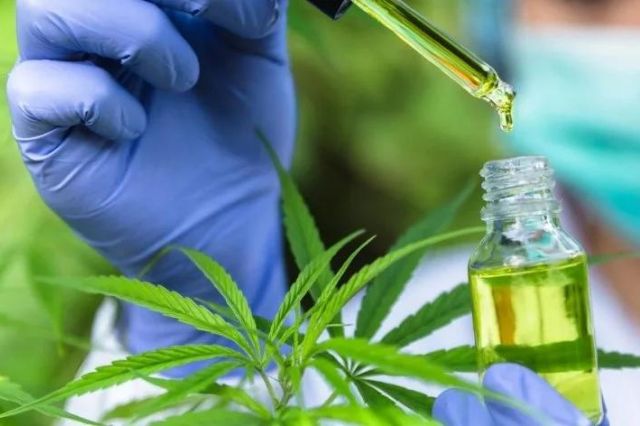Medical marijuana: it’s a term that’s gaining traction, grabbing headlines, and transforming the face of healthcare. Yet, it’s also a topic steeped in controversy and misinformation. This article aims to illuminate the reality of this powerful plant, showcasing how it’s proving to be a healthcare game-changer. For those new to the subject or buried under layers of misconceptions, this deep dive into the world of medical marijuana will provide valuable insights.
The Science Behind Medical Marijuana
Understanding the science behind medical marijuana begins with recognizing its key compounds: THC (tetrahydrocannabinol) and CBD (cannabidiol) among others. THC is the primary psychoactive compound, while CBD is non-psychoactive and often lauded for its therapeutic potential. The differences and synergy between these two prominent cannabinoids significantly influence the medical application of the plant.
Crucially, our bodies possess an intricate network called the endocannabinoid system (ECS). The ECS, a crucial player in maintaining our body’s equilibrium, interacts intimately with these compound. This interaction forms the cornerstone of how and why medical marijuana can influence such a diverse range of health conditions.
Medical Conditions Benefitting from Medical Marijuana
Medical marijuana is not a one-trick pony. It’s a versatile player in the healthcare field, offering symptomatic relief for a myriad of conditions. From mitigating chronic pain to tempering the tremors associated with multiple sclerosis, the plant’s therapeutic scope is wide. The versatility of medical marijuana is truly remarkable, demonstrating significant promise in various clinical situations.
Consider epilepsy. Some forms of this debilitating condition have shown an encouraging response to certain strains of medical marijuana. In the realm of cancer, medical marijuana offers respite, alleviating chemotherapy-induced nausea and vomiting. These symptomatic reliefs often result in improved quality of life and overall well-being.
And then there’s PTSD. This distressing mental health condition, prevalent among veterans, is now being effectively managed with medical marijuana. The emerging potential of medical marijuana in psychiatric medicine is a promising development that opens a new avenue for treatment.
Case Studies: Medical Marijuana Success Stories
Numbers and stats tell a story, but so do individuals. Like the 9-year-old boy with severe epilepsy, whose seizure frequency plummeted after introducing CBD-rich cannabis oil into his regimen. Or the cancer survivor who found solace from chemotherapy’s grueling side effects through the therapeutic use of medical marijuana. These aren’t isolated incidents, they are reflections of a broader narrative. Real-life experiences often speak louder than scientific data, underscoring the potential impact of medical marijuana on patients’ lives.
Medical Marijuana and Mental Health
Beyond its physical applications, medical marijuana is beginning to make its mark on mental health. Preliminary studies suggest that it may have a role in managing conditions like depression and anxiety. Though research is still in its infancy, the findings are promising. The fact that medical marijuana might provide a fresh approach to treating mental health conditions is a testament to its versatile potential.
The Process of Getting a Medical Marijuana Card
Let’s take Kentucky for example. For residents of Kentucky, the journey to gain legal access to medical marijuana involves obtaining a critical piece of identification: a Kentucky medical marijuana card. While the process may initially seem complex, it is, in fact, a series of logical steps that necessitate careful attention and diligence.
The first milestone in this journey involves understanding Kentucky’s qualifying conditions for medical marijuana use. These conditions, governed by state law, define the medical circumstances under which a resident may apply for a medical marijuana card.
Following this, applicants need to gather the necessary documentation. This often involves detailed medical records, prescriptions, and letters from healthcare providers, demonstrating the need for medical marijuana as a part of their treatment regime.
Once the application is submitted, it undergoes a thorough review by the state’s health department. Upon approval, the applicant is issued a medical marijuana card, granting them legal access to use marijuana for their health condition.
Addressing Concerns and Risks
Like any therapeutic intervention, medical marijuana isn’t without its risks. Potential side effects can range from dry mouth and increased heart rate to more severe issues like hallucinations or low blood pressure. It’s crucial to consult with a healthcare provider before starting any new treatment. Patient education and professional medical guidance are key to ensuring the safe and effective use of medical marijuana.
The Future of Medical Marijuana
Despite ongoing research, medical marijuana’s future holds vast potential. As we delve deeper into its mechanisms and applications, we inch closer to a future where medical marijuana plays an integral role in our healthcare system. It’s an exciting field that continually evolves and has the potential to bring unprecedented changes to healthcare.
Conclusion
Medical marijuana is transforming the healthcare landscape. It’s not a miracle cure, but it is a powerful tool in our therapeutic arsenal. As we continue to unravel its mysteries, we can look forward to a future where its full potential is realized. The journey toward this future is not without hurdles, but with every bit of research and understanding, we take one step closer to redefining medical treatments.






